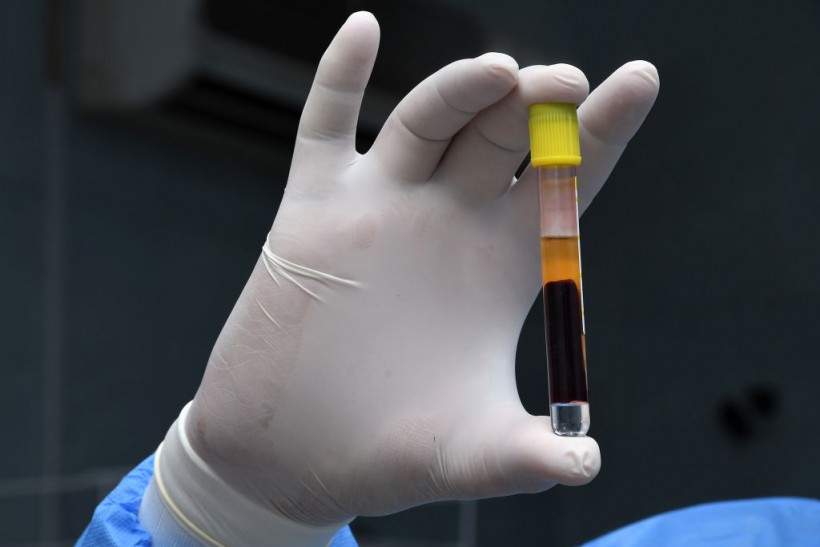Researchers at Cornell University have recently designed micro-sized artificial cilia using platinum-based components that can regulate the movement of fluids at such a scale.
As specified in a Nanowerk report, cilia are the diligent ushers of the body. These microscopic hairs, which move fluid by rhythmic beating, are accountable for pushing cerebrospinal fluid in an individual's brain, clearing the phlegm and dirt from the lungs, and keeping other organs and tissues clean.
Cilia have proven difficult to reproduce in engineering employments, considered a technical phenomenon, particularly at the microscale.
Essentially, the technology could someday allow low-cost, portable diagnostic devices for manipulating cells, testing blood samples, or assisting in the processes of microfabrication.
ALSO READ: Welsh Scientists Invent a Solvent-Free Machine That Can Safely Clean Toxic Chemicals in Water

A new technology developed could someday allow low-cost, portable diagnostic devices for manipulating cells, testing blood samples, or assisting in the processes of microfabrication.
Nano Actuator
The paper, published in the Nature journal, was led by lead author Wei Wang, a doctoral student. According to Wang, there are many ways to make artificial cilia that respond to light, electrostatic or magnetic force.
The research team is the first to know, though, to use the new nano actuator to indicate artificial cilia that are individually regulated.
This project, also led by the senior author of the paper, Itai Cohen, a physics professor in the College of Arts and Sciences, builds off a platinum-based, electrically-powered actuator, the part of the device that's moving, the group created in the past, to allow microscopic robots to walk.
Those bending bot legs' mechanics are similar, although the function and applications of the cilia system are different, not to mention quite flexible.
Microfluid Manipulation Devices
Cohen explained that they are showing here that once the cilia are individually addressed, the flows can be manipulated in any way they are wanted. One can create multiple separate trajectories; he can develop a circular flow, a transport, or flows that split up into paths and then recombine.
The professor added that one can get flow lines in three dimensions and elaborated, "anything is possible."
It has been quite a challenge to use the present platforms to create tiny cilia, work in water, are electrically solvable, and can be interpreted with interesting electronics; Cohen continued explaining.
This new system is addressing such problems. More so, with this kind of platform, researchers hope to develop the next wave of "microfluid manipulation devices."
Artificial Cilial System
A standard device contains a chip with 16 square units containing eight cilia arrays each unit and eight cilia per array, with every cilium approximately 50 micrometers in length, resulting in a "carpet" of roughly a thousand artificial cilia.
As the voltage in every cilium oscillates, its surface oxidizes and reduces periodically, making the cilium bend back and forth, enabling it to pump fluid at tens of microns each second.
Essentially, the arrays can be stimulated independently, thus making an endless combination of flow patterns mimicking the flexibility observed in their biological counterparts.
Researchers @Cornell have designed a micro-size artificial cilial system that could eventually enable low-cost, portable diagnostic devices for testing blood samples, manipulating cells or assisting in microfabrication processes. @CornellGrad @Nature https://t.co/b9QbdhbAHZ
— Cornell Chronicle (@CornellNews) May 25, 2022
As a bonus, Cornell Chronicle reported, the researchers developed a cilia device equipped with a complementary metal-oxide-semiconductor, or CMOS clock circuit, essentially an electronic "brain" that enables the cilia to operate sans being tethered to a conventional computer system.
For Low-Cost Diagnostic Tests
This then opens the door to developing a host of low-cost diagnostic tests that could be carried out in the field. Cohen said one could imagine in the future people taking this small centimeter-by-centimeter device, placing a drop of blood on it, not to mention carrying out all the assays.
He also said that one would not have to have "a fancy pump," he would not have to have any equipment; you would only literally put it under sunlight, and it would work, the professor continued.
Related information about the use of artificial intelligence in diagnosing diseases is shown on TED's YouTube video below:
RELATED ARTICLE: How the Use of Nanomedicine at Nanoscale Contributes to Diagnosis, Treatment of Disease
Check out more news and information on Nanotechnology in Science Times.










!['Cosmic Glitch' in Einstein's Theory of General Relativity Could Be Explained in This New Scientific Tweak [Study]](https://1721181113.rsc.cdn77.org/data/thumbs/full/53435/258/146/50/40/cosmic-glitch-in-einsteins-theory-of-general-relativity-could-be-explained-in-this-new-scientific-tweak-study.jpeg)



